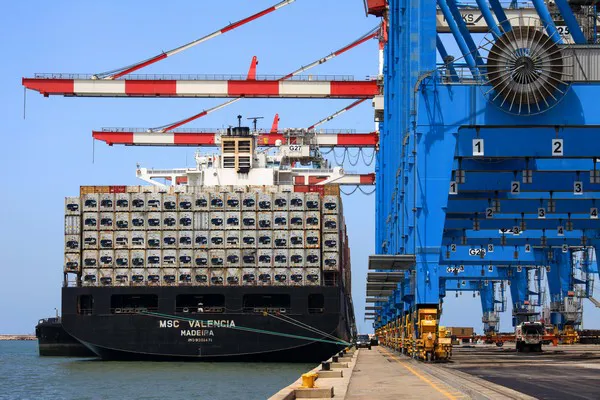What is the future of specialised reefer shipping?
“It is not what you would necessarily expect," says Richard Bright on the impact of the last two years on specialised reefer shipping rates. “The reefer rates on both containers and reefer shipping have risen to unprecedentedly high levels.”
Richard, who is the editor and founder of Reefer trends and also edits the Reefer Brief (a news and information service for the global reefer shipping business) was speaking during a presentation at Fruit Logistica. He concluded that, where normally supply and demand determine the price, this was not the case in reefer shipping recently. “The demand for reefer capacity hasn’t played any part in the increase of reefer rates for either containers or the specialised mode.”
If its not supply and demand, then what? Richard sees main four reasons for the rise in rates. They include, as a result of the Covid-disruptions, increased demand for dry cargo, the availability of containers, dropping service levels for container lines – “from an average 70 to 80 percent to below 30 percent” - and container congestions.
“These four factors will probably never combine again. The last two years have been an extraordinary period, which is very unlikely to be repeated. All of these combined, led to the restrictive availability of reefer containers, a lot of which were being used as non-operative reefers to transport dry cargo, which was making more money than reefer cargo.” On top of that the conflict in the Ukraine added more pressure to a system already under strain, remarks Richard.
Mode reinvented
What is the impact of all this on reefer shipping, which had already seen a long term declining trend in favour of containers? “The specialised reefer should have been dead in 2020,” says Richard, referring to the IMO rules on sulphur oxide that came into effect from January 2020. “The reefer is a lot less fuel efficient than the container. The extra cost of the fuel should have made the reefer a lot less competitive.”
The analyst concludes that the extraordinary market circumstances however, have allowed the reefer operators to reinvent the mode. “Whereas the container lines were operating at an efficiency of between 25 and 40 percent, the specialised reefers were operating at an efficiency of 95 percent plus. There wasn’t this capacity constraint and the fleet was still able to operate successfully.” He sees it as the reason that a lot of the cargo switched over from containers to specialised reefers, that were able to focus on service rather than on cost.
Richard cites the analogy of bus versus taxi to explain why specialised reefer shipping has lost market share over the past 20 years. Where the taxi – specialised reefer shipping - is more expensive than the bus, it also offers a dedicated and direct service. That however comes at a cost that, with tight margins, might be an obstacle. “The problem for a lot of shippers is that the margins are so tight that this additional cost cannot be covered.”
Battle between cost and reliability
So with the market returning to more ‘normal’ circumstances, will specialised reefers be able to retain the business gained during the last few years? The analyst notes that both cost and reliability play a role in that. “Fast, dedicated and reliable is the mantra of the reefer industry. If you can do that, then that offsets the additional cost which shippers pay.” The analyst notes that it presents the industry with the question of whether it should be cost or service driven.
“This year will determine that. The container line service will normalise, there will be more container availability, there is no congestion and the container line reliability is increasing to pre-Covid levels. The challenge for the reefer operators is how they are going to defend themselves against what is likely to be a reduction in costs for the container line services.”
Richard foresees that the increasing availability of container equipment and the decreasing demand for dry cargo may possibly lead to a more aggressive pricing policy from container liners. “That will have an impact on intra container liners, but also with the specialised mode.” The analyst concludes that the level of that impact remains to be seen.
Ageing and shrinking fleet
Then there is the factor that the reefer fleet is ageing and shrinking with only a limited number of new builds, meaning the reefer shipping alternative is restricted in capacity. This could have a serious impact on the industry. Richard mentions that the average age of the fleet is 30 years whereas the average acceptable lifespan of a reefer vessel is 26 years. There is a degree of investment to keep the ships going but whether these investments will include new builds is unclear to the analyst. He expects that if shippers see a value in the specialised reefer service, they will be prepared to pay a premium which could encourage investment in the sector.
However he also observes that the very long term and big investments – Richard mentions the cost of new builds to be between 40 and 50 million USD – could influence those decisions. In short, there are many factors at play in the future of specialised reefer shipping in which developments this year could play a decisive role.

